Progress Match is another nasty program that has been launched by the Israelian Download Valley company. The company appears to be a vendor of many suspicious, unwanted and potentially harmful applications that target Mac users. Progress Match is yet another product in a long line of junkware. Rest assured that there’s nothing useful about this program. The Progress Match program acts in a contrary way once installed on your Mac. It was created to collect private data and spread more PUPs (potentially unwanted programs.) It is reportedly affecting users around the globe. If you want to get rid of Progress Match virus on Mac, you can do it by using the info provided in this article.
Remove Progress Match Mac adware and Secure macOS
Progress Match Mac adware Manual Removal Guide
Skip all steps and download anti-malware tool that will safely scan and clean your Mac.
Run a free scan and check if your Mac is infected with malware.
SpyHunter for Mac Scanner feature is free. Other features are paid. Here you can review its EULA and Privacy Policy.
Distribution of ProgressMatch Adware on Mac
ProgressMatch is a nasty potentially undesired application – adware – which has been reported to be infecting Mac devices. At the moment security experts have not been able to identify a single tactic that is being used to infect the targets. We presume that the bad actors are using several of the most important methods to carry out malicious campaigns.
A common way of setting adware attacks like ProgressMatch is the use of fake Flash Player update notifications. These nasty notifications are propagated on various questionable websites that in turn load in popular browsers as browser redirects. Other cases can utilize complex social engineering tricks and hyperlinks that are specifically made to confuse the intended targets into infecting themselves. Two more scenarios that are used in combination with email messages rely on infected files used as payloads ‒ documents and software installers.
- Infected Software Installers ‒ The criminals craft malicious packages made out of legitimate software installers. They are taken from the official vendor download sites, modified and then posted on online sites or attached (either as file attachments) or linked in the email messages.
- Infected Documents ‒ They represent dangerous files that usually come in the form of some of the most popular document types: rich text documents, spreadsheets and databases. When the users open them up a notification prompt will ask them to enable the built-in scripts (macros). If this is done then the malware is installed on the victim computer.
Malicious browser plugins carriers of ProgressMatch and the associated program can be uploaded to hacker-controlled sites and P2P networks like BitTorrent as well. The hacker operators frequently utilize template design, text and images to create portals that look like legitimate download sources. They may also use domain names that are very similar to legitimate sites and advertise them via pop-ups or ad networks.
The adware code associated with ProgressMatch may also be found in numerous malware toolbars. They are usually made for the most popular web browsers: Mozilla Firefox, Google Chrome, and Safari. They can be distributed on shady download sites or even on the browsers repositories (such as the Chrome Web Store for Google Chrome) using fake developer accounts.
Progress Match Virus on Mac – How Does It Work?
First of all, the browser hijacker gets into your system through junkware that’s attached to otherwise useful programs. “Free” software developers are especially prone to pulling this trick since the data collected by the hijackers can be very profitable (more on that later.)
The racket works like this – while installing a program, maybe a virtual disk tool or a browser extension, you agreed to have Progress Match as your default search engine. Can’t remember? That’s OK. The hijackers are programmed to hide these options in the Custom, Advanced or Slow portions of the install wizard.
Progress Match can affect Google Chrome, Mozilla Firefox, Opera, Safari, and other browsers. Soon after its installation, Progress Match becomes able to assign the homepage, default search engine, and new tab URL settings to search.Progress Match.com. This issue can significantly diminish your browsing experience.
There’s nothing that sticks out; the design is very similar to any other search engine, including Google, Bing, or DuckDuckGo. Looks can always be deceiving. As we’ve already established, Progress Match uses shady methods of distribution. The inconspicuous design also has a purpose.
Since most people don’t even realize that the site is malicious, they simply tolerate it on their systems. You’d be surprised at how many people don’t even notice a difference.
How does it monetize its presence on affected Mac devices? Progress Match virus collects data from the searches. Think about everything you type into your favorite search engine…
- your interests
- places you want to visit
- health problems you may have
- services that you need
That info is very valuable for ad targeting. Google, Facebook, and other big-name ad companies also implement this tracking, but they also provide a useful product. Second-rate advertising tools like Progress Match want a piece of that pie and the only way they can get it is through hijackers.
Progress Match Mac adware Removal Guide
If your system is showing infection symptoms, you should definitely take action and remove Progress Match Mac adware and related files from your macOS. The sooner the better! Below you can find our step-by-step Mac virus removal instructions that give you the opportunity to get rid of Progress Match Mac adware either manually or automatically. If you don’t feel comfortable with manual instructions, download a reliable Progress Match Mac adware removal tool that will scan your Mac system for malware and clean it safely for you. If any questions arise, or additional help is needed leave us a comment.
How to Remove Progress Match Mac adware on a Mac Manually
Remove Progress Match Mac adware and related files from OSX.
- 1. Force Quit all suspicious applications.
Go to the Apple menu in the upper-left corner of your screen and choose Force Quit option.

You will see a list of all currently running applications. Go find Progress Match Mac adware, select it and then navigate to the “Force Quit” button. You can also find the last application you installed on your Mac and stop it as well.
Since software bundling is a common propagation method, the Progress Match Mac adware may get installed along with the lastly installed application and their activities on the system may be related.
- 2. Remove Progress Match Mac adware and other related potentially unwanted applications from the Applications folder.
Open the Finder and select the Applications menu. Then search for the unwanted application and drag it to the Trash.
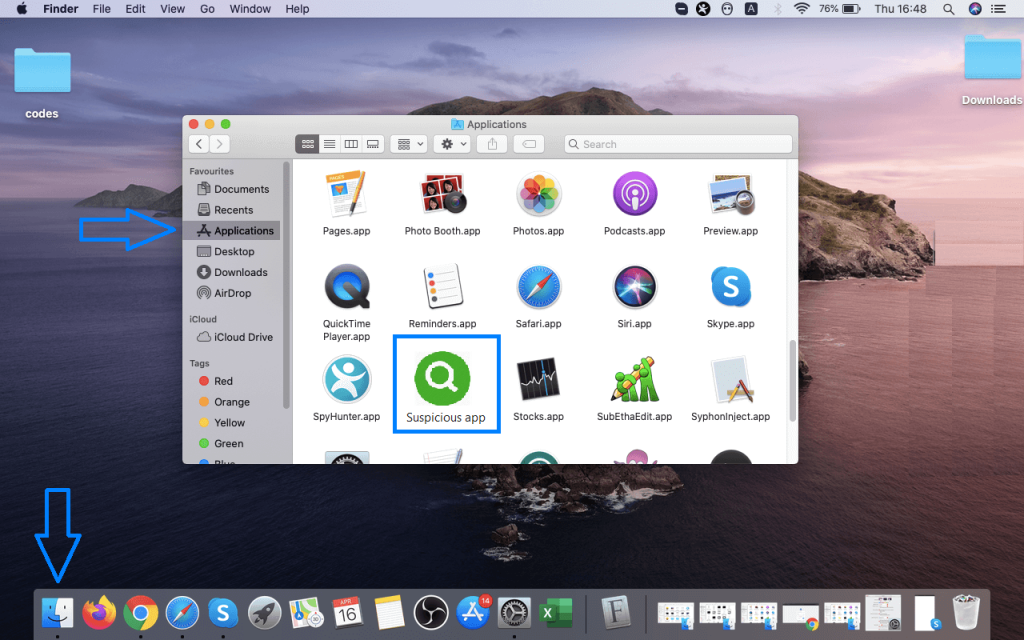
- 3. Мanually look for Progress Match Mac adware in the Libraries of your Mac.
WARNING! You are about to tamper with Library files on Mac. Make sure that you know the name of the virus file. Deleting the wrong file may cause irreversible damage to your MacOS.
Select Go from the top menu bar and navigate to Go to Folder…
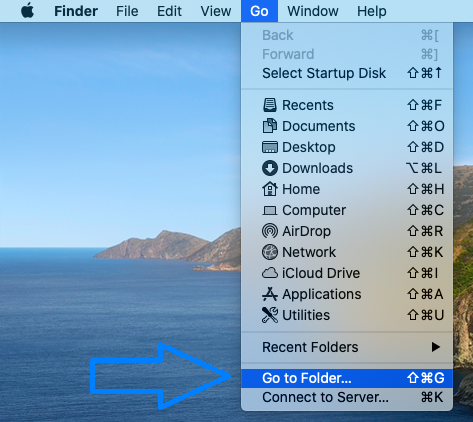
When the window appear start entering the following folder locations one by one:
/Library/Application Support
/Library/LaunchDaemons
~/Library/LaunchAgents
In each folder look for any recently-added suspicious files and move them to the Trash. Examples of files generated by adware:
- installmac.AppRemoval.plist
- myppes.download.plist
- mykotlerino.ltvbit.plist
- kuklorest.update.plist
Remove Progress Match Mac adware From Your Browser
Remove suspicious browser extensions that can be responsible for the appearance of invasive pop-ups and browser redirects.
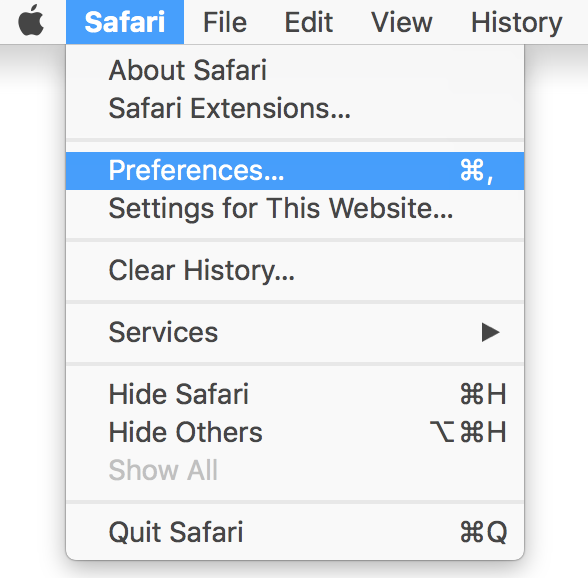
2. Click on the “Extensions” tab. If you see a suspicious or unwanted extension, select it and click “Uninstall“.
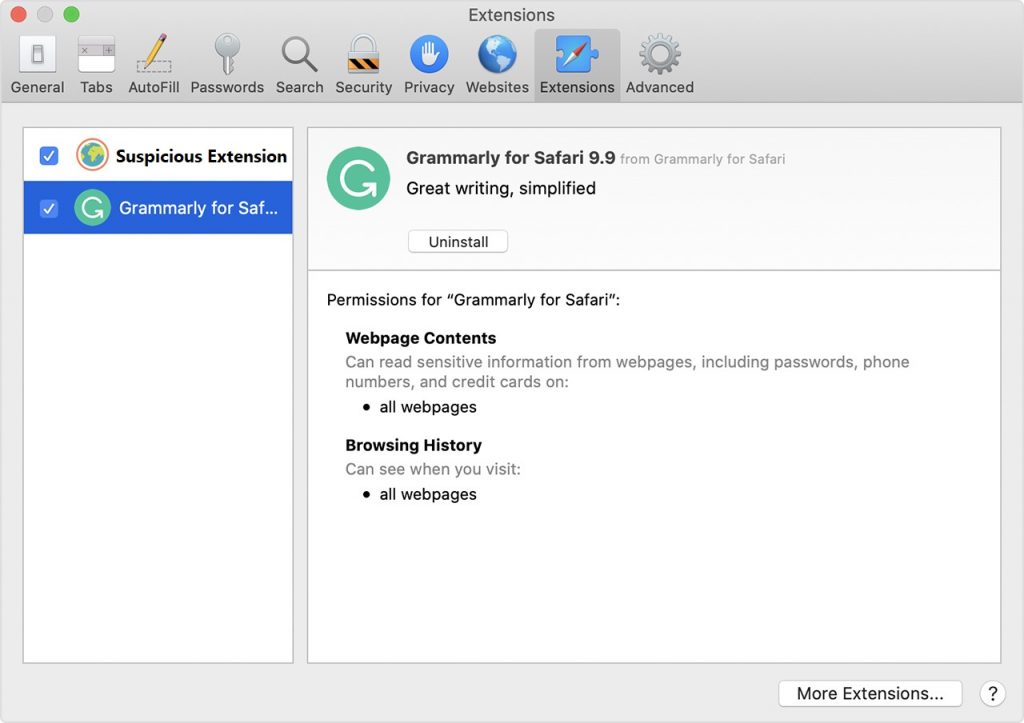
3. Reset Safari web browser. Beware that this step will remove the history as well as some of your saved data. Before you proceed we recommend that you make sure to write down all passwords, logins and important details.
If you are using Safari version 9 or higher open the browser and go to “Preferences“. Then select the “Privacy” tab. When the window appears on screen click on the “Remove All Website Data” button.
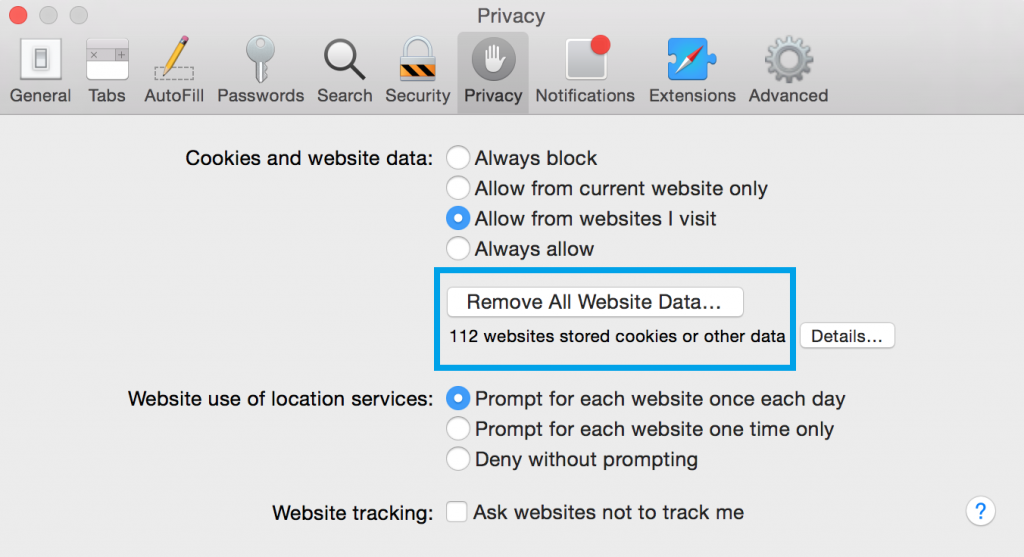
In case that your Safari web browser is running a version from 5 to 8, then just select Safari on the top menu bar and click on “Reset Safari” option. Choose which data to be cleaned from the browser.
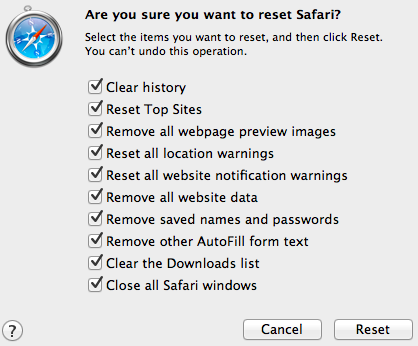

2. Click “Extensions” in the left menu. Then click on the trash bin icon to remove the suspicious extension.

3. Again in the left menu, under Chrome, Click on “Settings“. Go under “On Startup” and set a new page.

4. Afterward, scroll down to “Search“, click on “Manage search engines“.

5. In the default search settings list, find the unknown search engine and click on “X“. Then select your search engine of choice and click “Make default“. When you are ready click “Done” button in the right bottom corner.
1. Start Mozilla Firefox. In the upper right corner, click on the Open menu icon and select “Add-ons“.

2. Inside the Add-ons Manager select “Extensions“. Search the list of extensions for suspicious entries. If you find any, select them and click “Remove“.

3. Click again on the Open menu icon, then click “Options“.

4. In the Options window, under “General” tab, click “Restore to Default“.

5. Select “Search” in the left menu, mark the unknown search engine and press “Remove”.

Remove Progress Match Mac adware from a Mac Automatically
While the above steps work very well in most of the cases when users’ OSX is infected with PUP or malware, sometimes the Mac virus removal requires the help of a professional application. This anti-malware tool will scan and remove malware from your Mac. It offers an active protection shield and comes with a variety of handy features that will keep your system fast, clean and secure.
DOWNLOAD Antivirus for MacSpyHunter for Mac Scanner feature is free. Other features are paid. Here you can review its EULA and Privacy Policy.



